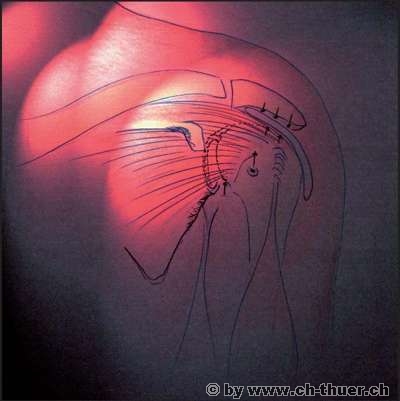|
As already mentioned in the anatomical section, the limbus forms a cartilaginous ring around the edge of the socket, thereby providing better purchase for the head of humerus and increasing the surface area of the joint by approximately one third.
Injury to the limbus, and particularly detachment from the edge of its socket, always entails a loss of stability for the shoulder. The resulting instability can lead to secondary damage, for example because the humerus is no longer centred properly in the joint socket and deviates upward when the arm is raised. This places the rotator cuff under pressure, causing it to rub against the acromion.
The result is an "impingement syndrome" or, in lay terms, a bottleneck situation.
Various degrees of injury or change to the limbus with the biceps insertion are described in the specialist literature, where reference is made to SLAP (superior limbus anterior posterior) lesions.
While it is certainly beyond the remit of this booklet to go into further details of these lesions, it is important for you to know that these changes generally lead to persistent conditions that are difficult to diagnose and often very demanding to treat surgically.
|
